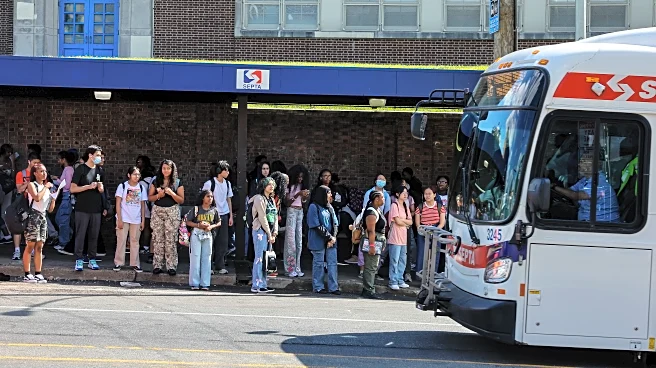What's Happening?
In cities across the United States, aging homes are increasingly becoming uninhabitable due to structural deterioration. This issue is particularly acute in Philadelphia, where many homes were built before 1939. Homeowners like Bernadette Reese-Hobson are struggling to maintain their properties as repair costs soar. Reese-Hobson, a retired social worker, faces significant challenges with her pre-World War II-era home, which has a large hole in the living room ceiling and corroded plumbing. The National Association of Home Builders reports that the average age of U.S. homes is now 40 years, with repair costs rising to an estimated $100 billion nationwide. Philadelphia, with its high homeownership rate and significant poverty levels, is at the center of this crisis. City officials and social service agencies are grappling with how to address the growing number of homes in disrepair.
Why It's Important?
The deterioration of aging homes has significant implications for urban development, public safety, and economic stability. As homes become uninhabitable, the risk of structural collapses increases, posing safety hazards to residents. The financial burden of repairs is overwhelming for many homeowners, particularly in economically disadvantaged areas. This situation exacerbates existing inequalities, as wealthier homeowners can afford necessary repairs, while poorer residents face the risk of losing their homes. The debate over whether government intervention is necessary highlights broader issues of housing affordability and urban renewal. Programs like Philadelphia's Basic System Repair Program and Built to Last offer some relief, but with long waiting lists and limited funding, many homeowners remain in precarious situations.
What's Next?
Philadelphia Mayor Cherelle Parker has proposed borrowing $800 million to build and preserve affordable housing, with a portion allocated to help current homeowners. However, the demand for assistance far exceeds available resources, as evidenced by the thousands on waiting lists for repair programs. State-level initiatives, such as Pennsylvania's allocation of funds from the American Rescue Plan, aim to address these issues, but more comprehensive solutions may be needed. The ongoing debate will likely focus on balancing immediate repair needs with long-term strategies for housing stability and affordability.
Beyond the Headlines
The crisis of aging homes raises ethical and policy questions about the role of government in ensuring safe and affordable housing. It also highlights the cultural significance of homeownership in America and the challenges faced by those who inherit properties without the means to maintain them. As cities like Philadelphia navigate these issues, the potential for innovative solutions, such as public-private partnerships and community-based initiatives, could emerge as viable paths forward.














